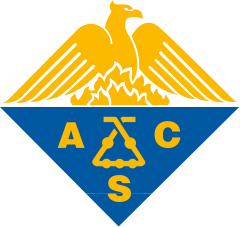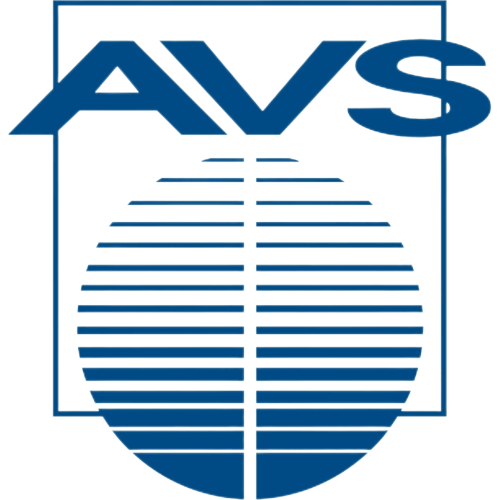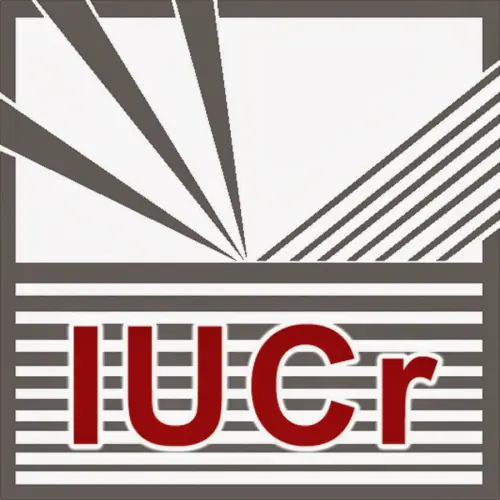Chemical Reviews, volume 119, issue 5, pages 3036-3103
Halide Perovskite Photovoltaics: Background, Status, and Future Prospects
Ajay Jena
,
Ashish Kulkarni
,
Tsutomu Miyasaka
Publication type: Journal Article
Publication date: 2019-03-01
Journal:
Chemical Reviews
scimago Q1
wos Q1
SJR: 17.828
CiteScore: 106.0
Impact factor: 51.4
ISSN: 00092665, 15206890
General Chemistry
Abstract
The photovoltaics of organic-inorganic lead halide perovskite materials have shown rapid improvements in solar cell performance, surpassing the top efficiency of semiconductor compounds such as CdTe and CIGS (copper indium gallium selenide) used in solar cells in just about a decade. Perovskite preparation via simple and inexpensive solution processes demonstrates the immense potential of this thin-film solar cell technology to become a low-cost alternative to the presently commercially available photovoltaic technologies. Significant developments in almost all aspects of perovskite solar cells and discoveries of some fascinating properties of such hybrid perovskites have been made recently. This Review describes the fundamentals, recent research progress, present status, and our views on future prospects of perovskite-based photovoltaics, with discussions focused on strategies to improve both intrinsic and extrinsic (environmental) stabilities of high-efficiency devices. Strategies and challenges regarding compositional engineering of the hybrid perovskite structure are discussed, including potentials for developing all-inorganic and lead-free perovskite materials. Looking at the latest cutting-edge research, the prospects for perovskite-based photovoltaic and optoelectronic devices, including non-photovoltaic applications such as X-ray detectors and image sensing devices in industrialization, are described. In addition to the aforementioned major topics, we also review, as a background, our encounter with perovskite materials for the first solar cell application, which should inspire young researchers in chemistry and physics to identify and work on challenging interdisciplinary research problems through exchanges between academia and industry.
Found
Top-30
Journals
|
10
20
30
40
50
60
70
80
|
|
|
ACS applied materials & interfaces
72 publications, 3.07%
|
|
|
ACS Applied Energy Materials
67 publications, 2.85%
|
|
|
Advanced Functional Materials
65 publications, 2.77%
|
|
|
Solar RRL
60 publications, 2.55%
|
|
|
Journal of Physical Chemistry C
60 publications, 2.55%
|
|
|
Journal of Physical Chemistry Letters
58 publications, 2.47%
|
|
|
Journal of Materials Chemistry A
55 publications, 2.34%
|
|
|
Advanced Energy Materials
52 publications, 2.21%
|
|
|
ACS Energy Letters
49 publications, 2.09%
|
|
|
Advanced Materials
49 publications, 2.09%
|
|
|
Journal of Materials Chemistry C
49 publications, 2.09%
|
|
|
Chemistry of Materials
41 publications, 1.75%
|
|
|
Advanced Optical Materials
38 publications, 1.62%
|
|
|
Chemical Engineering Journal
36 publications, 1.53%
|
|
|
Angewandte Chemie
33 publications, 1.4%
|
|
|
Angewandte Chemie - International Edition
33 publications, 1.4%
|
|
|
Nanomaterials
31 publications, 1.32%
|
|
|
Journal of the American Chemical Society
27 publications, 1.15%
|
|
|
Solar Energy
26 publications, 1.11%
|
|
|
Nanoscale
24 publications, 1.02%
|
|
|
Nano Energy
24 publications, 1.02%
|
|
|
Small
23 publications, 0.98%
|
|
|
Journal of Energy Chemistry
22 publications, 0.94%
|
|
|
Physical Chemistry Chemical Physics
22 publications, 0.94%
|
|
|
Materials
21 publications, 0.89%
|
|
|
Advanced Materials Interfaces
21 publications, 0.89%
|
|
|
Advanced Science
20 publications, 0.85%
|
|
|
Inorganic Chemistry
20 publications, 0.85%
|
|
|
Applied Physics Letters
18 publications, 0.77%
|
|
|
10
20
30
40
50
60
70
80
|
Publishers
|
100
200
300
400
500
600
|
|
|
Wiley
566 publications, 24.1%
|
|
|
American Chemical Society (ACS)
497 publications, 21.16%
|
|
|
Elsevier
461 publications, 19.63%
|
|
|
Royal Society of Chemistry (RSC)
292 publications, 12.43%
|
|
|
Springer Nature
142 publications, 6.05%
|
|
|
MDPI
97 publications, 4.13%
|
|
|
AIP Publishing
60 publications, 2.55%
|
|
|
IOP Publishing
56 publications, 2.38%
|
|
|
American Physical Society (APS)
34 publications, 1.45%
|
|
|
Institute of Electrical and Electronics Engineers (IEEE)
23 publications, 0.98%
|
|
|
Frontiers Media S.A.
15 publications, 0.64%
|
|
|
Oxford University Press
11 publications, 0.47%
|
|
|
American Association for the Advancement of Science (AAAS)
7 publications, 0.3%
|
|
|
Japan Society of Applied Physics
5 publications, 0.21%
|
|
|
Acta Physica Sinica, Chinese Physical Society and Institute of Physics, Chinese Academy of Sciences
5 publications, 0.21%
|
|
|
EDP Sciences
4 publications, 0.17%
|
|
|
Walter de Gruyter
4 publications, 0.17%
|
|
|
Optica Publishing Group
4 publications, 0.17%
|
|
|
Pleiades Publishing
3 publications, 0.13%
|
|
|
American Vacuum Society
3 publications, 0.13%
|
|
|
Science in China Press
3 publications, 0.13%
|
|
|
Taylor & Francis
3 publications, 0.13%
|
|
|
The Technical Association of Photopolymers, Japan
3 publications, 0.13%
|
|
|
F1000 Research
2 publications, 0.09%
|
|
|
Cambridge University Press
2 publications, 0.09%
|
|
|
IntechOpen
2 publications, 0.09%
|
|
|
IGI Global
2 publications, 0.09%
|
|
|
The Electrochemical Society of Japan
1 publication, 0.04%
|
|
|
International Union of Crystallography (IUCr)
1 publication, 0.04%
|
|
|
100
200
300
400
500
600
|
- We do not take into account publications without a DOI.
- Statistics recalculated only for publications connected to researchers, organizations and labs registered on the platform.
- Statistics recalculated weekly.
Are you a researcher?
Create a profile to get free access to personal recommendations for colleagues and new articles.
Cite this
GOST |
RIS |
BibTex |
MLA
Cite this
GOST
Copy
Jena A., Kulkarni A., Miyasaka T. Halide Perovskite Photovoltaics: Background, Status, and Future Prospects // Chemical Reviews. 2019. Vol. 119. No. 5. pp. 3036-3103.
GOST all authors (up to 50)
Copy
Jena A., Kulkarni A., Miyasaka T. Halide Perovskite Photovoltaics: Background, Status, and Future Prospects // Chemical Reviews. 2019. Vol. 119. No. 5. pp. 3036-3103.
Cite this
RIS
Copy
TY - JOUR
DO - 10.1021/acs.chemrev.8b00539
UR - https://doi.org/10.1021/acs.chemrev.8b00539
TI - Halide Perovskite Photovoltaics: Background, Status, and Future Prospects
T2 - Chemical Reviews
AU - Jena, Ajay
AU - Kulkarni, Ashish
AU - Miyasaka, Tsutomu
PY - 2019
DA - 2019/03/01
PB - American Chemical Society (ACS)
SP - 3036-3103
IS - 5
VL - 119
SN - 0009-2665
SN - 1520-6890
ER -
Cite this
BibTex (up to 50 authors)
Copy
@article{2019_Jena,
author = {Ajay Jena and Ashish Kulkarni and Tsutomu Miyasaka},
title = {Halide Perovskite Photovoltaics: Background, Status, and Future Prospects},
journal = {Chemical Reviews},
year = {2019},
volume = {119},
publisher = {American Chemical Society (ACS)},
month = {mar},
url = {https://doi.org/10.1021/acs.chemrev.8b00539},
number = {5},
pages = {3036--3103},
doi = {10.1021/acs.chemrev.8b00539}
}
Cite this
MLA
Copy
Jena, Ajay, et al. “Halide Perovskite Photovoltaics: Background, Status, and Future Prospects.” Chemical Reviews, vol. 119, no. 5, Mar. 2019, pp. 3036-3103. https://doi.org/10.1021/acs.chemrev.8b00539.
Found error?
Found error?
Publisher
Journal
scimago Q1
wos Q1
SJR
17.828
CiteScore
106.0
Impact factor
51.4
ISSN
00092665
(Print)
15206890
(Electronic)



























